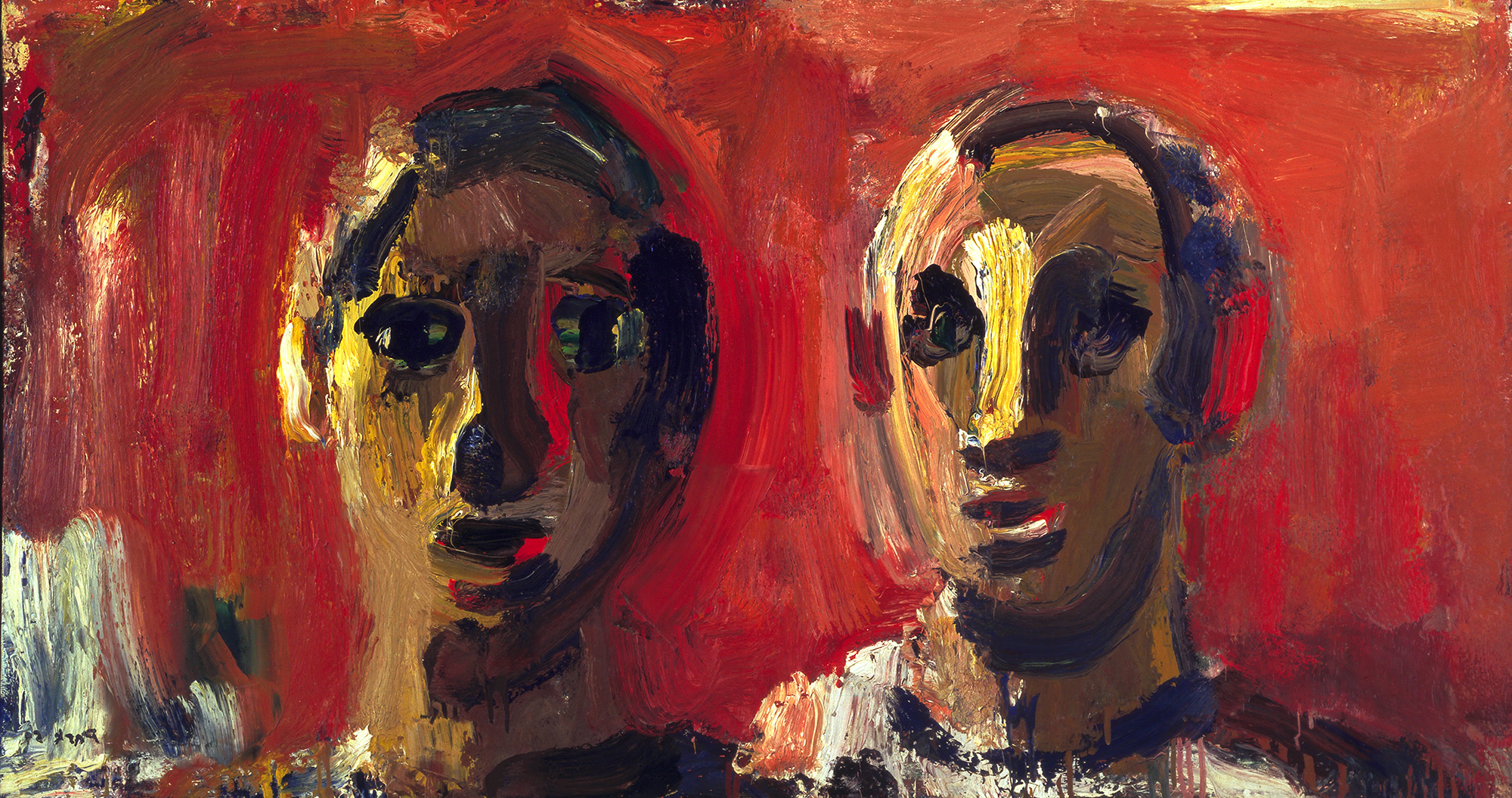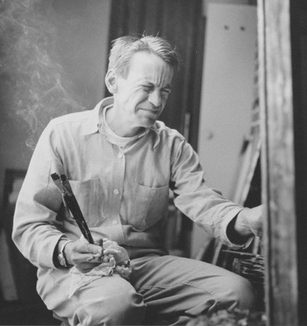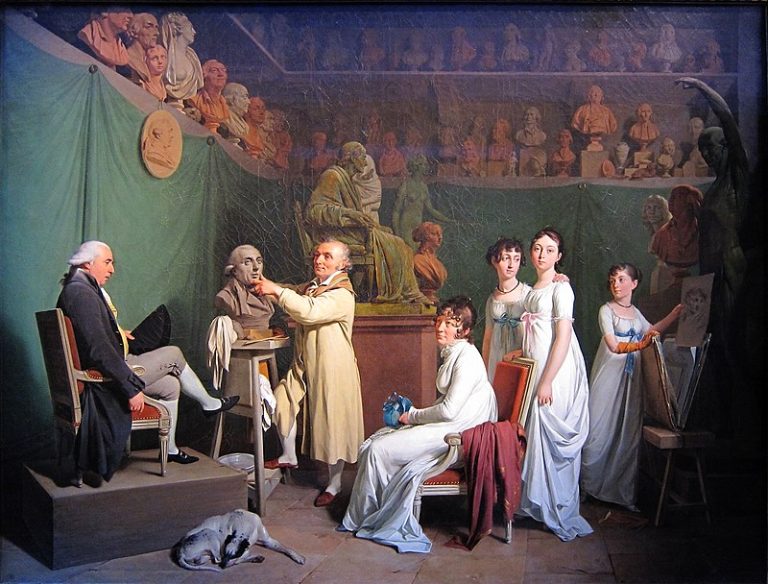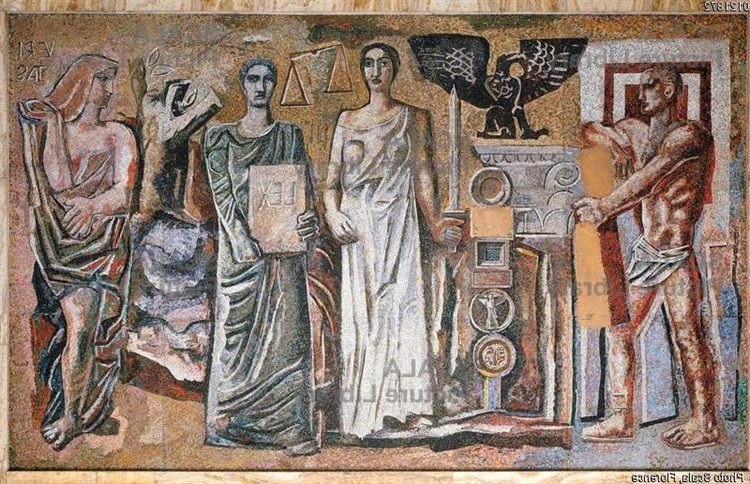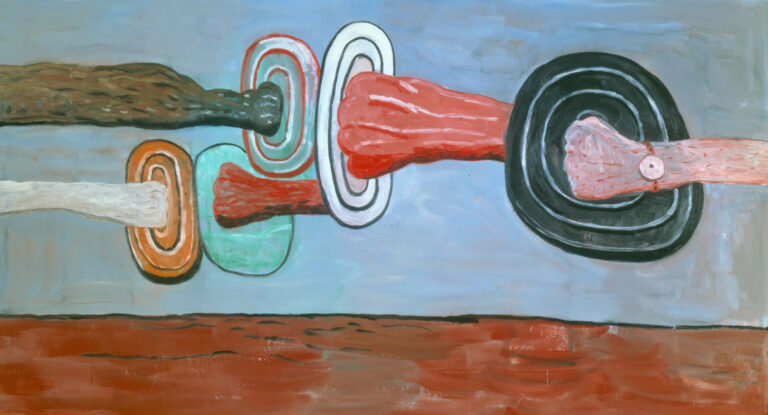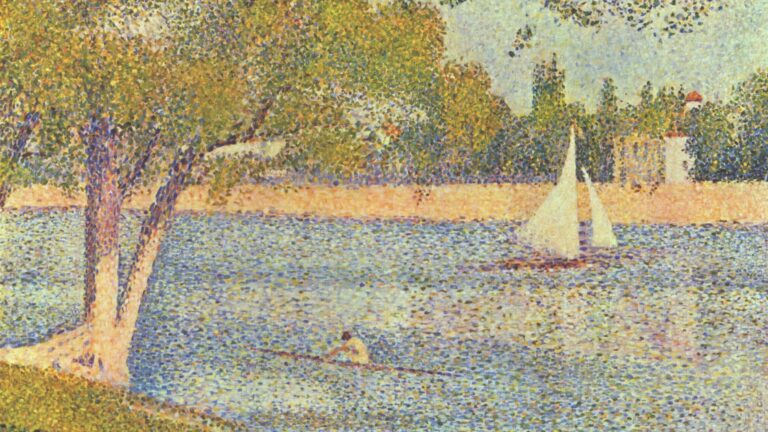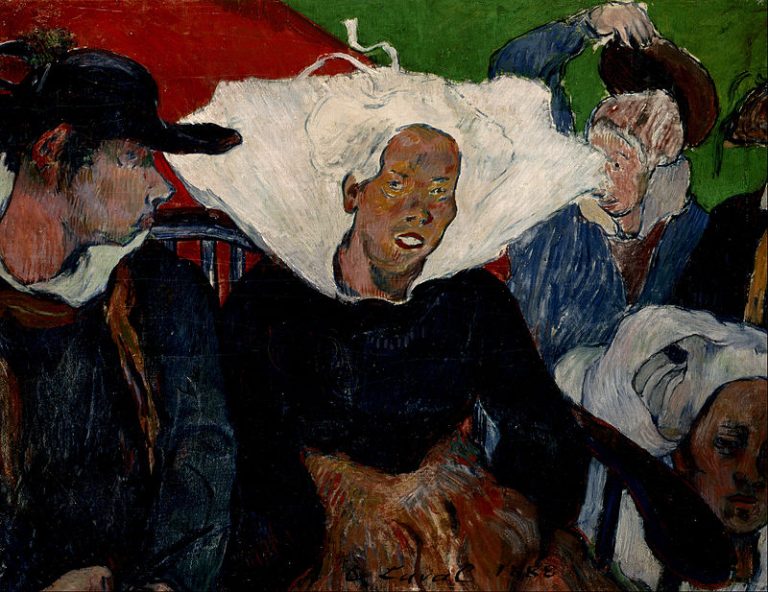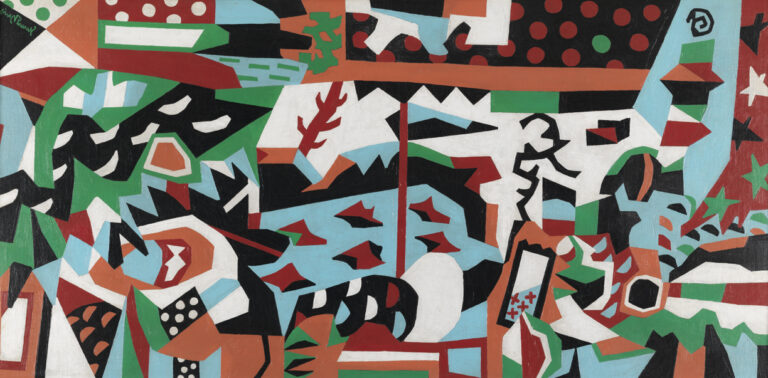David Park Painter: Pioneering Bay Area Figurative Art Movement in the 1950s
Born: March 17, 1911, Boston, Massachusetts, United States
Death: September 20, 1960, Berkeley, California, United States
Art Movement: Bay Area Figurative School
Nationality: American
Teacher: Clyfford Still
Institution: Otis College of Art and Design
David Park Painter: Pioneering Bay Area Figurative Art Movement in the 1950s
Life and Career of David Park
David Park’s journey as an artist spanned from his early years in Boston to his influential role in California’s art scene. His life was marked by a commitment to artistic growth, teaching, and a significant shift from abstract expressionism to figurative painting.
Early Years and Education
David Park was born in Boston in 1911, showing an exceptional talent for drawing at a young age. He demonstrated an early commitment to art, deciding to pursue it as a life path when he was still a teenager.
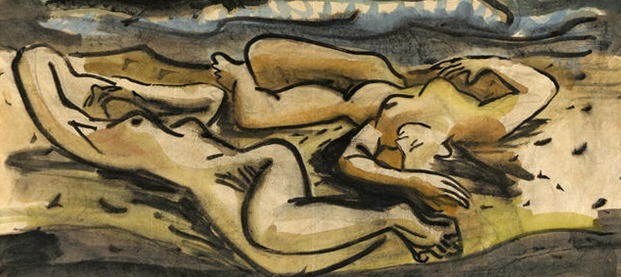
Two Girls on the Beach, ca. 1934, by David Park
By age sixteen, Park had grown dissatisfied with traditional education and chose to focus on developing his artistic abilities.
His formal art education was brief but formative. In 1928, he moved to Los Angeles to attend the Otis Art Institute. However, this formal training lasted less than a year before Park dropped out, preferring to develop his artistic style independently.
Park’s natural talent and dedication to his craft allowed him to thrive despite his limited formal education. These early years established his independent artistic spirit that would later define his career.
Boston Beginnings and Move to California
Park’s artistic roots were established in Boston, where he was raised and first developed his creative sensibilities. The cultural environment of Boston provided his initial exposure to the art world, though he would soon seek new horizons.
The move to California proved transformative for Park’s career. After his brief stint at the Otis Art Institute in Los Angeles, he eventually settled in the San Francisco Bay Area.
This relocation positioned him in a vibrant artistic community that would influence his work and where he would later make his most significant contributions.
California’s landscape and cultural scene offered Park new perspectives and opportunities. The West Coast art environment, less rigid than the established East Coast traditions, allowed him space to experiment and eventually develop the distinctive style that would make him famous.
Teaching at California School of Fine Arts
Park’s influence extended beyond his own artwork through his significant teaching career. In 1944, he began teaching at the California School of Fine Arts (now the San Francisco Art Institute), where he became an important mentor to many emerging artists.
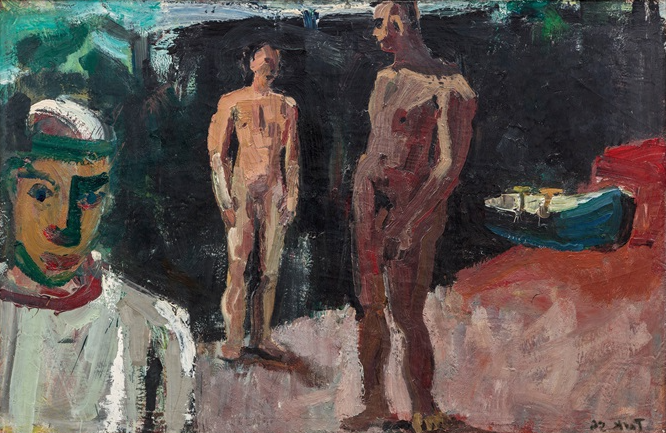
Figures with Rowboat, 1956, by David Park
As an instructor, Park balanced teaching technical skills with encouraging individual expression. His approach to art education reflected his own artistic philosophy – valuing authenticity over following trends.
During this period, abstract expressionism dominated the American art scene.
Park’s teaching position provided stability while he continued to develop his own work. His influence grew significantly when, in a bold artistic statement, he rejected the prevailing abstract expressionism and returned to figurative painting. This decisive shift would inspire what became known as the Bay Area Figurative School.
Final Years and Battle with Cancer
Park’s career reached its creative peak in the 1950s as he refined his figurative style, creating works with vibrant colors and strong emotional impact. His oil on canvas paintings from this period represent some of his most celebrated work.
Tragically, Park’s artistic journey was cut short when he was diagnosed with cancer. Despite his illness, he continued to paint with remarkable dedication, creating some of his most powerful works while facing his mortality.
Park died in 1960 at the age of 49, leaving behind a significant artistic legacy. His influence continued to grow posthumously as the Bay Area Figurative movement he founded gained wider recognition. Park’s work demonstrated that figurative painting could be both modern and emotionally resonant, challenging the dominance of abstraction in mid-century American art.
Artistic Evolution and Style
David Park’s artistic journey reflects a bold evolution from abstract expressionism to figurative art. His distinctive style developed through experimentation, personal conviction, and a deep connection to human experience.
Transition from Abstraction to Figurative Art
In the late 1940s, David Park made a dramatic shift that would change the course of his career and influence American art. While teaching at the California School of Fine Art, Park was initially working in an Abstract Expressionist style as seen in his Untitled work from 1948.
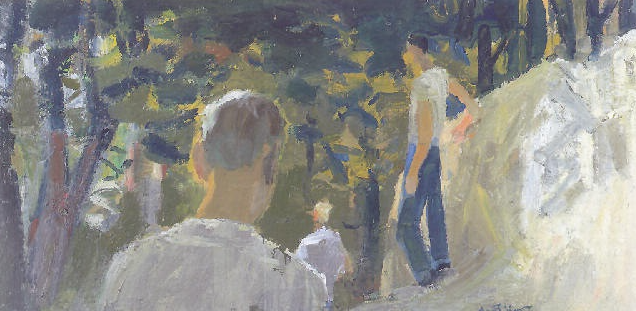
Forest Trail, 1954–1955, by David Park
However, in a defining moment, Park famously loaded his abstract paintings into his car and dumped them at the city disposal. This radical act marked his deliberate turn toward figurative representation.
Park felt abstract expressionism had become formulaic and disconnected from human experience. His return to figuration wasn’t regression but revolution—challenging the dominant artistic movement of his time with warm, expressive depictions of people in everyday settings.
Bay Area Figurative Movement
Park’s bold shift from abstraction to figuration established him as the founder of the Bay Area Figurative Movement. This distinctive California art movement emerged as a counterpoint to New York’s abstract expressionism.
Fellow artists Richard Diebenkorn and Elmer Bischoff soon joined Park, forming the movement’s core. Later, younger painters like Joan Brown expanded its influence.
The movement maintained abstract expressionism’s gestural brushwork and emotional intensity while reintroducing recognizable human forms. Park’s work during this period featured thick paint application and vibrant color harmonies.
SFMOMA recognizes Park as having “decisively influenced the course of Bay Area art” by initiating this historic new direction in painting that would flourish from the 1950s through the 1960s.
Influence of Jazz and Color
Park’s work pulses with rhythmic energy influenced by his love of jazz. As an accomplished musician who played piano and guitar, he brought musical sensibilities to his paintings.
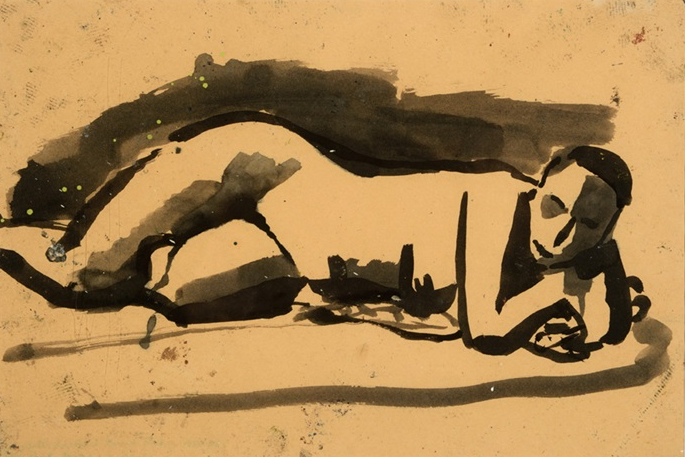
Reclining Female Nude (No. 353), ca. 1955, by David Park
His color palette evolved to embrace rich, vibrant hues applied in bold, confident strokes. Park developed a distinctive approach to color that balanced harmony with unexpected combinations.
The texture in his paintings became increasingly important, with thick impasto surfaces creating a tactile quality. His brushwork showed both control and spontaneity.
Park’s compositions often featured simplified shapes and forms, reducing complex figures to their essential elements while maintaining their humanity. This approach created works that feel both timeless and immediate.
Legacy and Aesthetic Impact
Park’s influence extends far beyond his tragically short career, which ended with his death from cancer in 1960 at age 49. His work created a vital alternative to pure abstraction in American art.
The fusion of abstraction’s expressive qualities with recognizable subject matter opened new possibilities for generations of painters. Park showed that representation could be as powerful and innovative as abstraction.
His paintings reveal a profound humanism—a belief in the importance of human connection in art. This perspective continues to resonate with contemporary viewers and artists.
Park’s willingness to follow his artistic convictions against prevailing trends demonstrates the importance of artistic integrity. His courage to change direction mid-career stands as an inspiring example for artists facing similar artistic crossroads.
Exhibitions and Collections
David Park’s artwork has been showcased in major exhibitions around the world and is held in prestigious museum collections. His contributions to the Bay Area Figurative Movement secured his place in American art history, with his most significant works continuing to draw attention and appreciation.
Retrospectives and Recognition
In recent years, SFMOMA (San Francisco Museum of Modern Art) mounted a comprehensive retrospective of David Park’s work. This exhibition featured 127 paintings and works on paper, marking the first major museum exhibition dedicated to Park in three decades. The show carefully examined his artistic development and significant contributions to American art.

Genesis, 1935 by David Park
Park’s work has also been featured at the Kreeger Museum in an exhibition titled “David Park The Prophet,” highlighting his influence on the art world. This recognition came decades after his death, cementing his legacy.
Throughout his career, Park moved from abstract expressionism to figurative work, a transition that initially puzzled critics but eventually earned widespread acclaim.
Works in Major Museums
David Park’s paintings are housed in several prestigious institutions across the United States. The Smithsonian American Art Museum and the Hirshhorn Museum both display important examples of his figurative works.
The Whitney Museum of American Art includes Park’s pieces in their collection of significant American painters. His presence in this institution underscores his importance to the development of American art in the mid-20th century.
Los Angeles County Museum of Art (LACMA) also holds notable pieces by Park. These major museums’ inclusion of his work speaks to his enduring influence and the continued appreciation for his unique artistic vision.
Park’s paintings bridge the gap between abstract expressionism and figurative art, making them valuable additions to these collections.
Notable Pieces and Their Significance
Several of Park’s paintings stand out for their artistic merit and historical significance. “The Bus” exemplifies his ability to capture everyday scenes with rich, expressive brushwork while maintaining a focus on human figures.
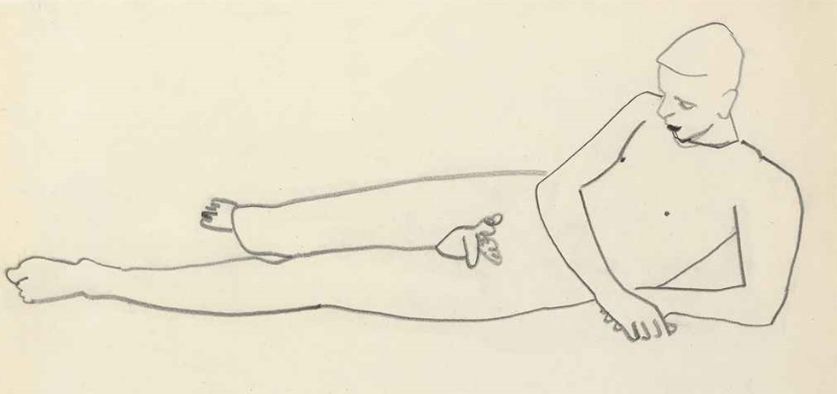
Reclining Nude, ca. 1955–1959, by David Park
“Four Men” demonstrates Park’s skill at depicting groups with psychological depth. His use of bold color and strong composition creates a sense of emotional connection between the figures.
“Couple” reveals Park’s interest in human relationships, portrayed with sensitivity and complexity. The painting shows his mature style with thick paint application and simplified forms.
“Rehearsal” captures musicians in performance, showcasing Park’s fascination with music and movement. This piece illustrates his talent for balancing formal abstraction with recognizable subject matter, a hallmark of his mature work.
Frequently Asked Questions
David Park made significant contributions to American art through his pioneering role in the Bay Area Figurative movement. His distinctive style and brave shift from abstraction to figuration changed the course of West Coast painting in the mid-20th century.
What are the significant contributions of David Park to the field of painting?
David Park’s greatest contribution was initiating the Bay Area Figurative movement in the 1950s. This marked a bold return to representational painting during the height of Abstract Expressionism’s popularity.
Park demonstrated remarkable conviction when he famously took his abstract paintings to the local dump, choosing instead to pursue figurative work. This decision influenced many California artists to reconsider figurative painting.
His work bridged the gap between abstraction and representation, creating a unique California aesthetic that differed from the dominant New York school of the time.
How did David Park’s style evolve throughout his career?
Park began as a traditional figurative painter in the 1930s before moving to abstraction in the 1940s, following the dominant trends of the time.
His pivotal shift came around 1950 when he abandoned abstraction and returned to figurative work, but with a new approach that incorporated the gestural brushwork and color knowledge gained from his abstract period.
In his final years, when illness limited his abilities, Park created vibrant gouache works on paper that showed his continued evolution as an artist.
What art movements is David Park associated with?
Park is primarily known as the founder of the Bay Area Figurative movement, which emerged in California during the 1950s.
Before this, he worked within Abstract Expressionism, though he ultimately rejected its non-representational approach.
His work bridges several movements, showing influences of Fauvism in his bold color choices and maintaining some Abstract Expressionist elements in his brushwork even after returning to figuration.
Can you discuss the impact of David Park’s work on contemporary art?
Park’s courage to break from abstraction when it was considered the only valid path for serious artists demonstrated an independence that continues to inspire contemporary painters.
His integration of abstract techniques with figurative subjects helped legitimize representational painting for later generations of artists.
The Bay Area Figurative tradition he founded continues to influence California art, with many contemporary painters acknowledging his impact on their approach to color and form.
What are some of the most recognized pieces created by David Park?
“Swimmers” (1954) is one of Park’s most celebrated works, showing his distinctive blend of figurative elements with bold brushwork and vibrant colors.
“Four Men” (1958) demonstrates his ability to convey human connection through simplified forms and expressive paint application.
His “Kids on Bikes” (1950) is historically significant as one of his earliest works after returning to figuration, marking the beginning of the Bay Area Figurative movement.
How has David Park influenced other artists in his genre?
Park directly influenced fellow Bay Area artists including Richard Diebenkorn, Elmer Bischoff, and Joan Brown. They followed his move toward figuration.
His approach to painting created a template that many California artists have built upon. He maintained the energy and brushwork of abstraction while depicting recognizable subjects.
His willingness to follow his artistic instincts rather than trends has served as a model of artistic integrity for generations of painters since.

